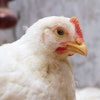In January–September 2012 the U.S. exported 22,312 metric tons of broiler meat to Colombia, 11 percent higher than the same time in 2011 (20,143 metric tons), according to a U.S. Department of Agriculture report.
This trend is also a reversal of 2011, when the U.S. exported a total of 28,986 metric tons of broiler meat in January–December, 9 percent lower than 2010's 31,870 metric tons. U.S. turkey meat exports totaled 705 metric tons in January–September 2012, 468 percent higher than the same period in 2011 (125 metric tons). In contrast, U.S. turkey meat exports totaled 285 metric tons in January–December 2011, 182 percent higher than 2010 (101.1 metric tons).
In January–September 2012, U.S. egg and egg product exports to Colombia totaled 88 metric tons, up 89 percent from 2011's 46.7 metric tons, according to the USDA. This upward trend is a change from 2011, when U.S. exports of egg and egg products to Colombia totaled 46.8 metric tons in January–December, 39 percent lower than 2010 (76.5 metric tons).
Despite increased market access to Colombian markets, U.S. exporters continue to struggle with port of entry issues prompting the USDA Foreign Agricultural Service to release a report citing ways to successfully improve shipment ease. According to the Foreign Agricultural Service, documentation and clerical errors represent the majority of port of entry problems for U.S. exports to Colombia. Others include noncompliance with sanitary, phytosanitary, and labeling requirements; the appearance of unsanitary packaging and non-compliance with labeling requirements (i.e. product origin); and a U.S. establishment’s not being registered with INVIMA.

















